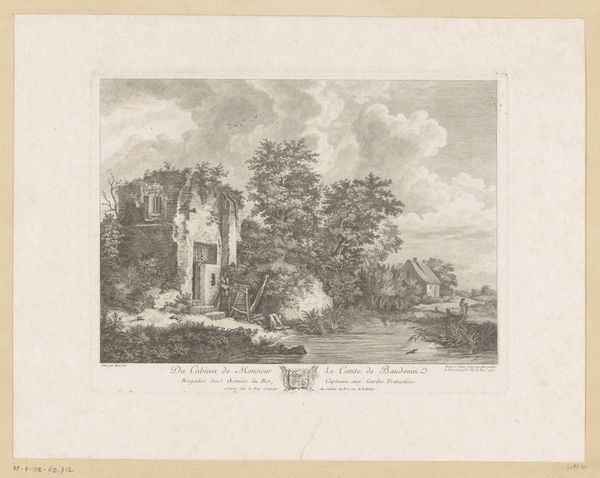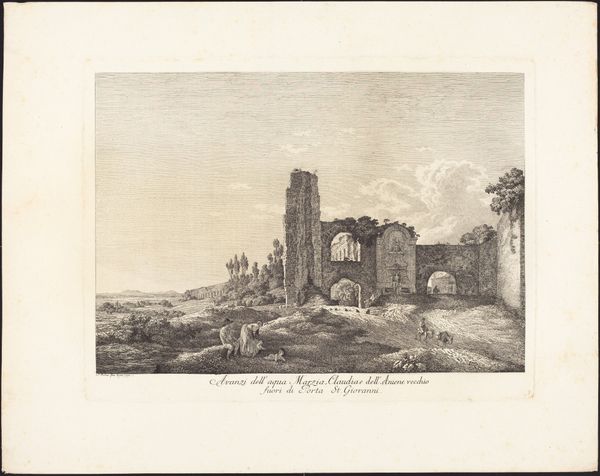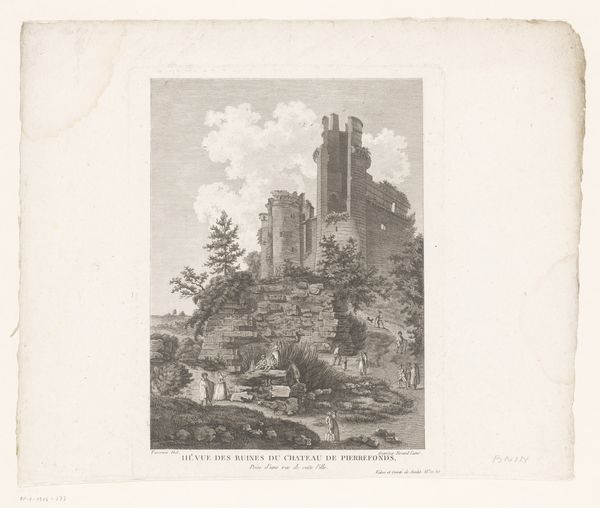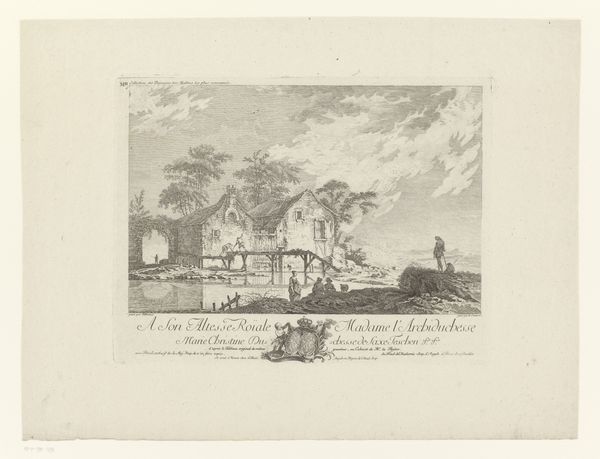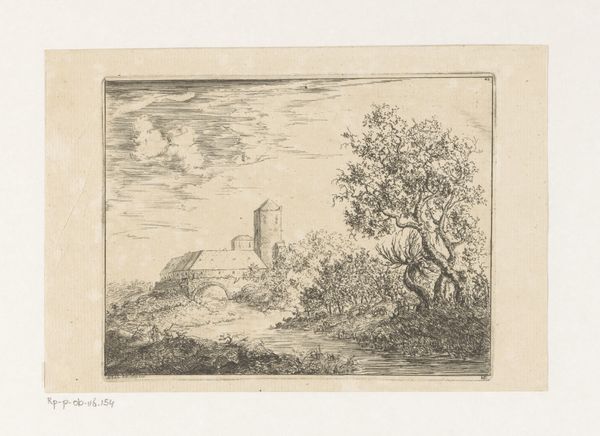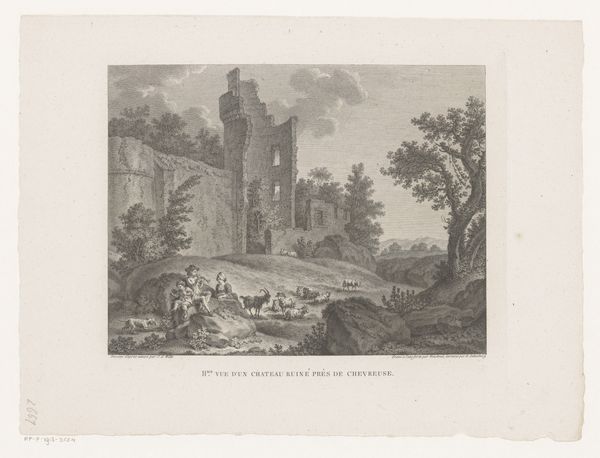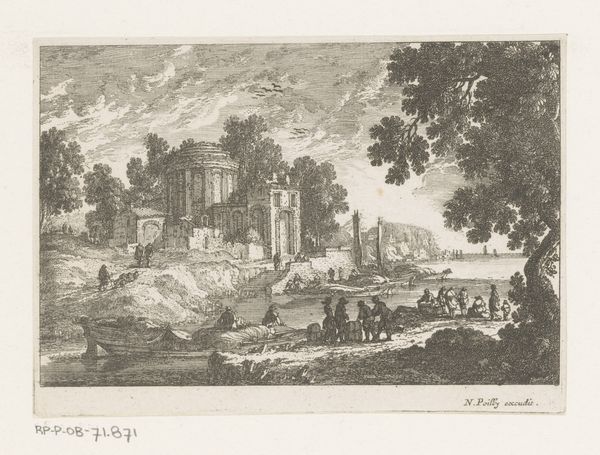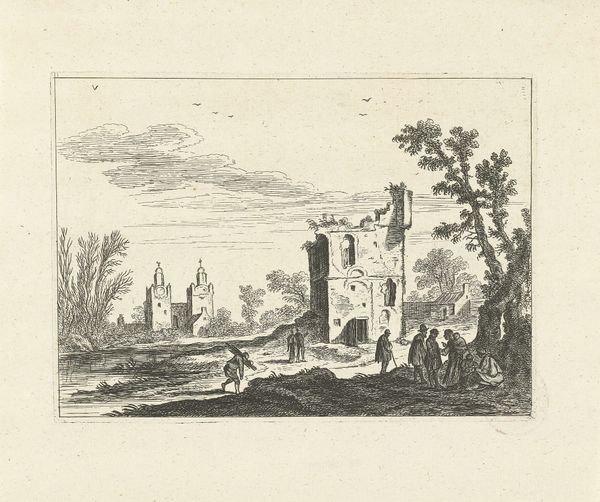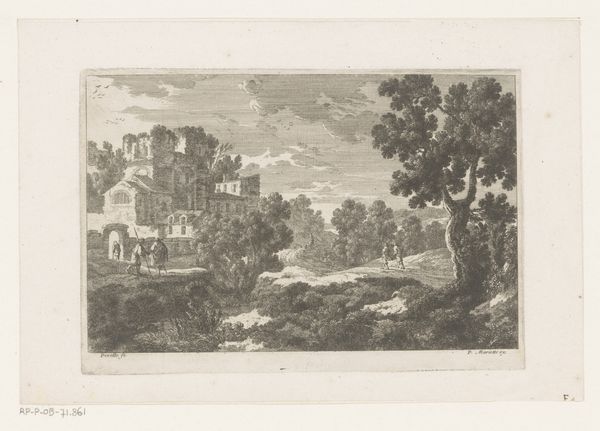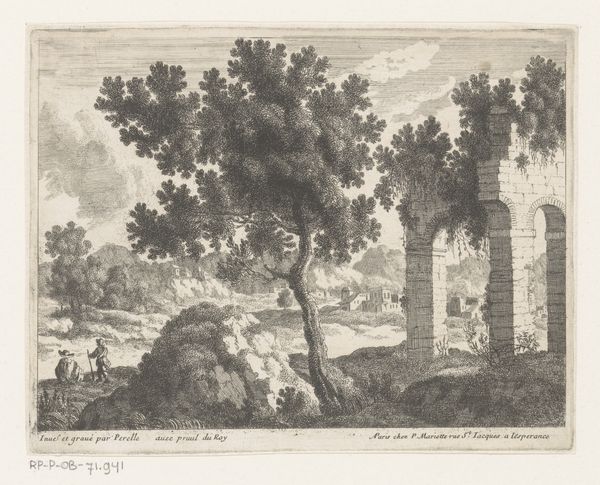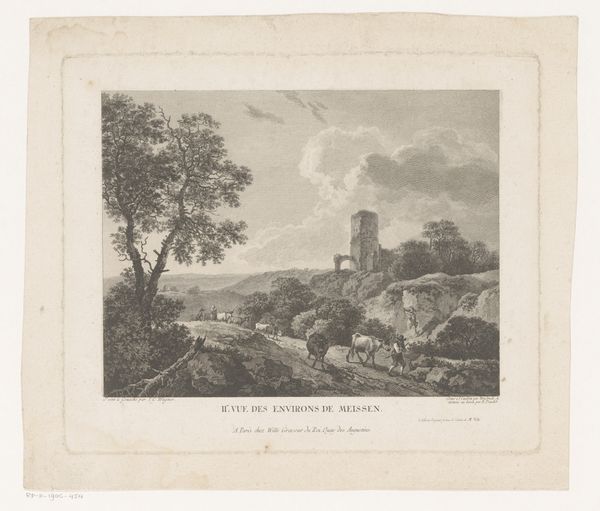
Dimensions: height 208 mm, width 265 mm
Copyright: Rijks Museum: Open Domain
Editor: Here we have "View of the Ruins of Chateau de Meru," an etching and engraving by Martin de Monchy, dating from after 1756. The skeletal remains of the castle evoke a feeling of melancholic grandeur. What do you see in this piece? Curator: Beyond the visual appeal of a Romantic ruin, this image functions as a critique of power. Ruins, especially those depicted during periods of social upheaval, can symbolize the decay of aristocratic privilege and the instability of social hierarchies. The seemingly objective landscape actually performs cultural work. Editor: So the artist isn’t simply capturing a pretty view, but making a commentary on the state of things? Curator: Precisely! Consider the historical context: this print was created decades before the French Revolution. Images like this, circulating amongst the public, fostered a consciousness of decline. De Monchy’s choice to focus on decay hints at a broader unease with the established order. How does that inform your understanding of Romanticism, beyond the aesthetic appreciation of nature? Editor: It gives the style a sharper political edge. I hadn’t thought about how landscapes could reflect the anxieties of the time so directly. Curator: Exactly. It also begs us to consider which ruins we choose to memorialize and why. What power structures are reflected, and reinforced, in the scenes that artists select to portray? Editor: I never looked at landscape art this way before, this gives me a lot to think about. Curator: Likewise. Considering art through this lens reveals how even seemingly benign landscapes can engage in subtle, yet potent, forms of social and political commentary.
Comments
No comments
Be the first to comment and join the conversation on the ultimate creative platform.
